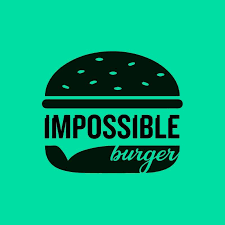Impossible Burger Products Obtain Child Nutrition Labels – What Does this Mean?

By Reed Mangels, PhD, RD
Impossible Foods, the maker of the Impossible Burger, recently announced that they have obtained Child Nutrition labels for Impossible Burger products.
What does this mean? According to the USDA, a Child Nutrition label statement clearly identifies what a product contributes toward school meal requirements. In other words, does a product supply 1 serving of vegetables or of whole grains or of another meal requirement? A product with a Child Nutrition label statement is not necessarily a higher quality product than another food without this label. The Child Nutrition label also does not mean that a food is safer to eat or free of pathogens or allergens. Child Nutrition labels do help those responsible for purchasing food for school lunch and similar programs to see how a product fits into USDA’s requirements.
Impossible Foods confirmed that the following statements have been approved for their products:
Foodservice 5 lb brick: One pound (16.00 oz) of (raw) Impossible™ Burger made with Soy Protein Concentrate and Potato Protein provides (when cooked) 11.09 oz equivalent meat alternative for the Child Nutrition Meal Pattern Requirements.
and
Foodservice ¼ lb patties: Each 4.00 oz (raw) Impossible™ Burger Patty made with Soy Protein Concentrate and Potato Protein provides (when cooked) 2.75 oz equivalent meat alternative for the Child Nutrition Meal Pattern Requirements.
The requirements for meats/meat alternatives for school lunch are:
- Preschool – 7-1/2 oz equivalents per week; at least 1-1/2 oz equivalents per day
- Grades K-5 – 8-10 oz equivalents per week; at least 1 oz equivalent per day
- Grades 6-8 – 9-10 oz equivalents per week; at least 1 oz equivalent per day
- Grades 9-12 – 10-12 oz equivalents per week; at least 2 oz equivalents per day
Nutritionally speaking, the 4.00 oz (raw) Impossible Burger that has a Child Nutrition Program label has 240 calories, 19 grams of protein, 14 grams of fat, 8 grams of saturated fat and 370 mg of sodium. It is fortified with calcium, iron, zinc, vitamin B12, and B-vitamins.
In contrast, 4.00 oz (raw) of ground beef (85% lean, 15% fat) has 243 calories, 21 grams of protein, 17 grams of fat, 6.5 grams of saturated fat, and 75 mg of sodium.
This suggests, from a nutrition standpoint, that the Impossible Burger has a significant amount of saturated fat and sodium and that it does not offer advantages over ground beef in this regard.
Impossible Burgers do not contain animal products (See resources for comments on animal testing in the development of Impossible Burgers). They are not organic. We do not know how the cost of these products will compare to ground beef. Cost is likely to have a large effect on whether or not school food services accept this product although consumer demand may also influence purchasing decisions.
Our article on burgers provides other ideas for products (including those based on beans and grains) that could also be incorporated into school lunch programs and other Child Nutrition programs.
For more information about school food service see https://www.vrg.org/fsupdate/index.htm#School
Resources
USDA. FNS meal programs. https://www.fns.usda.gov/cn/labeling/fns-meal-programs. 2013.
USDA. National School Lunch Program Meal Pattern Chart. https://www.fns.usda.gov/nslp/national-school-lunch-program-meal-pattern-chart. 2019.
Impossible Burger nutrition. https://buy.impossiblefoods.com/products/impossible-burger-family-pack.
Brown PO. The agonizing dilemma of animal testing. https://impossiblefoods.com/blog/the-agonizing-dilemma-of-animal-testing. 2017.
Osmanski S. Did Impossible Foods really test on animals? https://www.greenmatters.com/p/does-impossible-foods-test-on-animals. 2020.
The contents of this posting, our website, and our other publications, including Vegetarian Journal, are not intended to provide personal medical advice. Medical advice should be obtained from a qualified health professional. We often depend on product and ingredient information from company statements. It is impossible to be 100% sure about a statement, info can change, people have different views, and mistakes can be made. Please use your best judgment about whether a product is suitable for you. To be sure, do further research or confirmation on your own.
